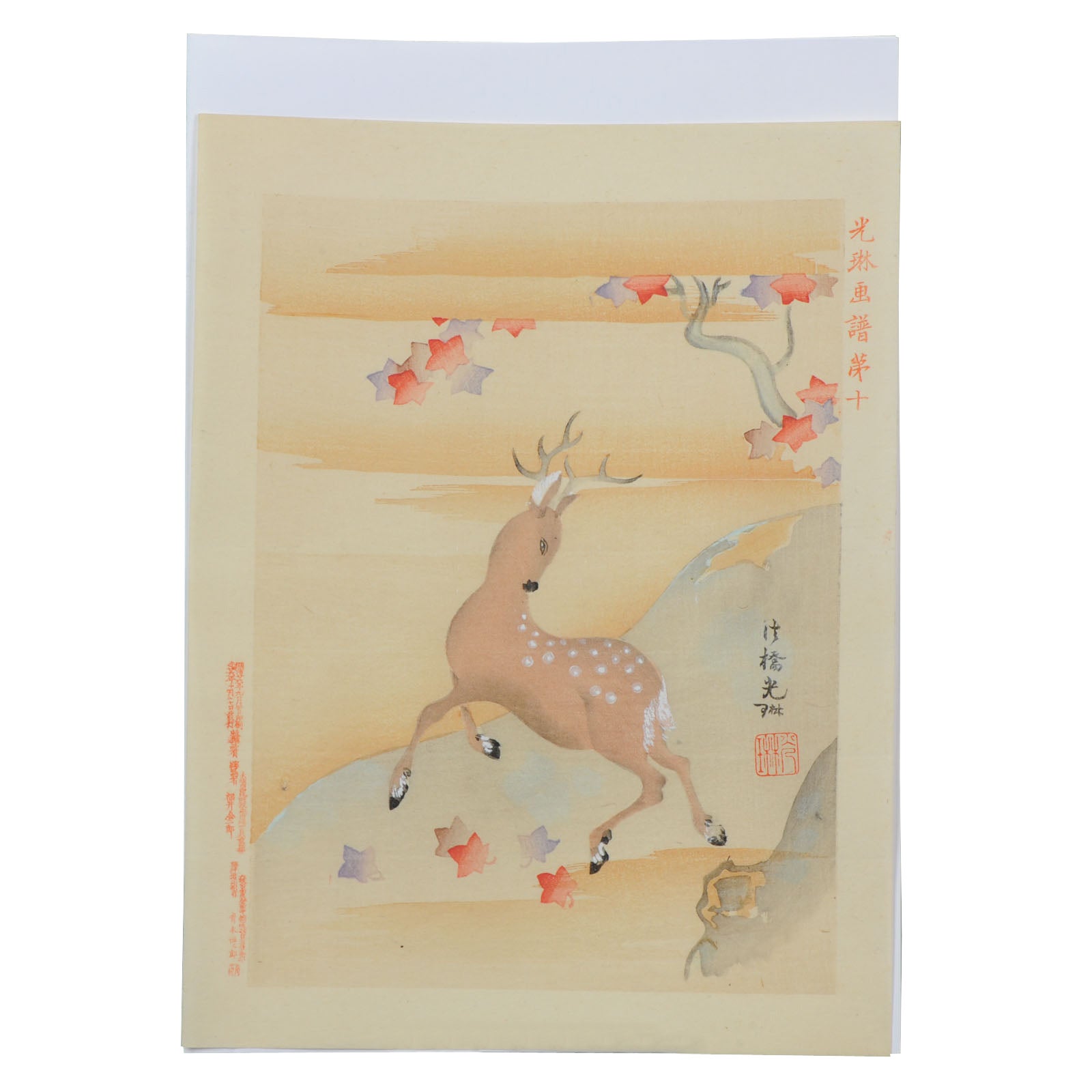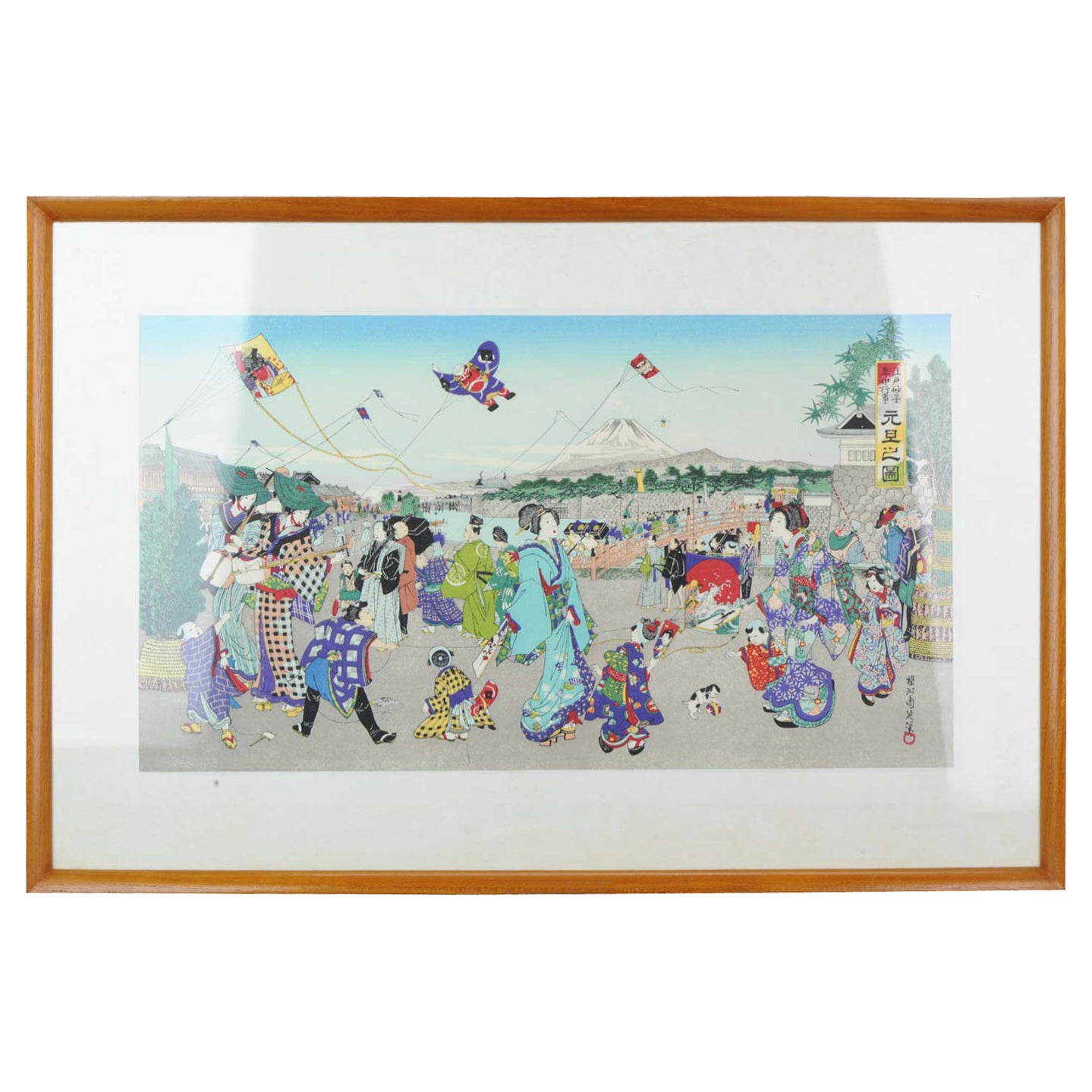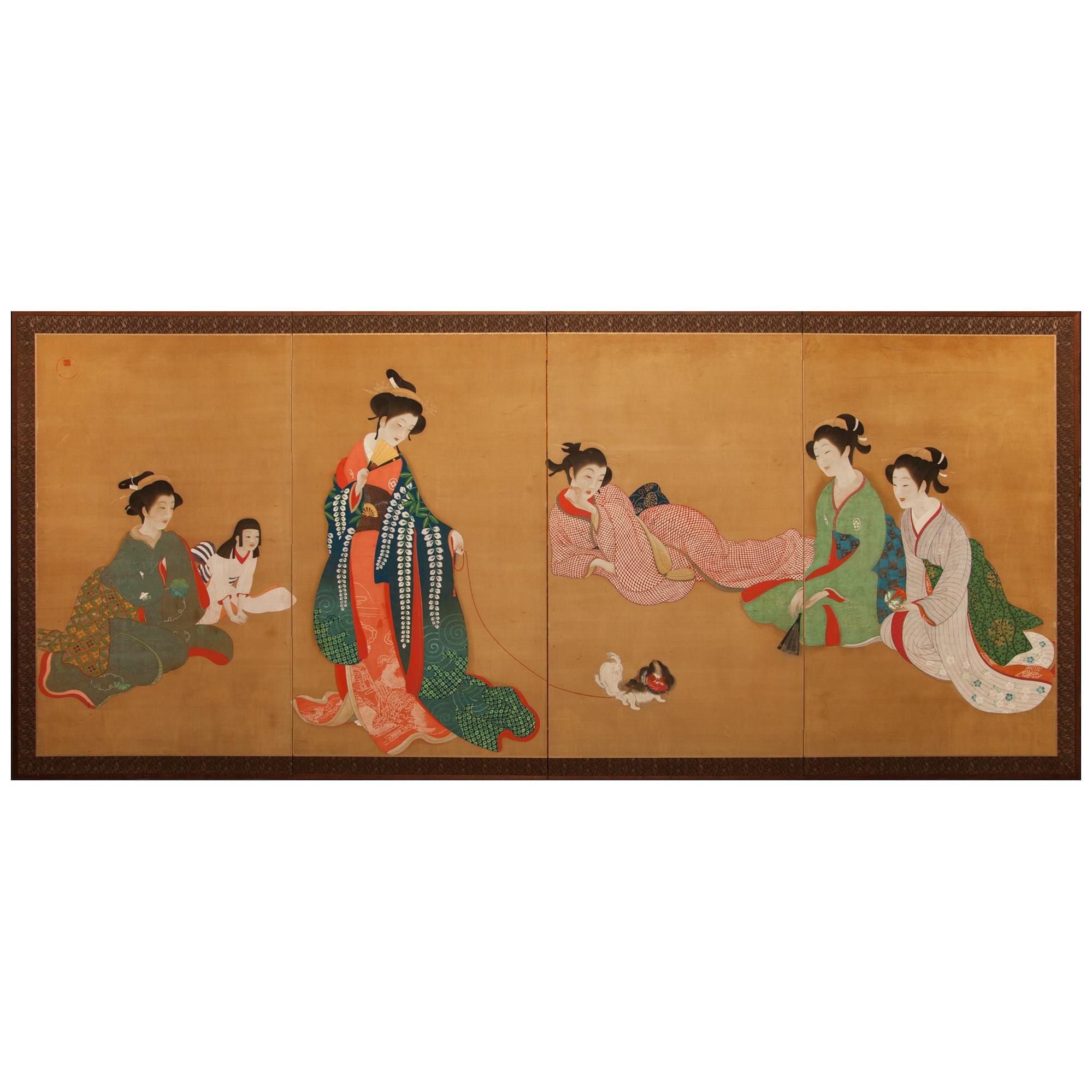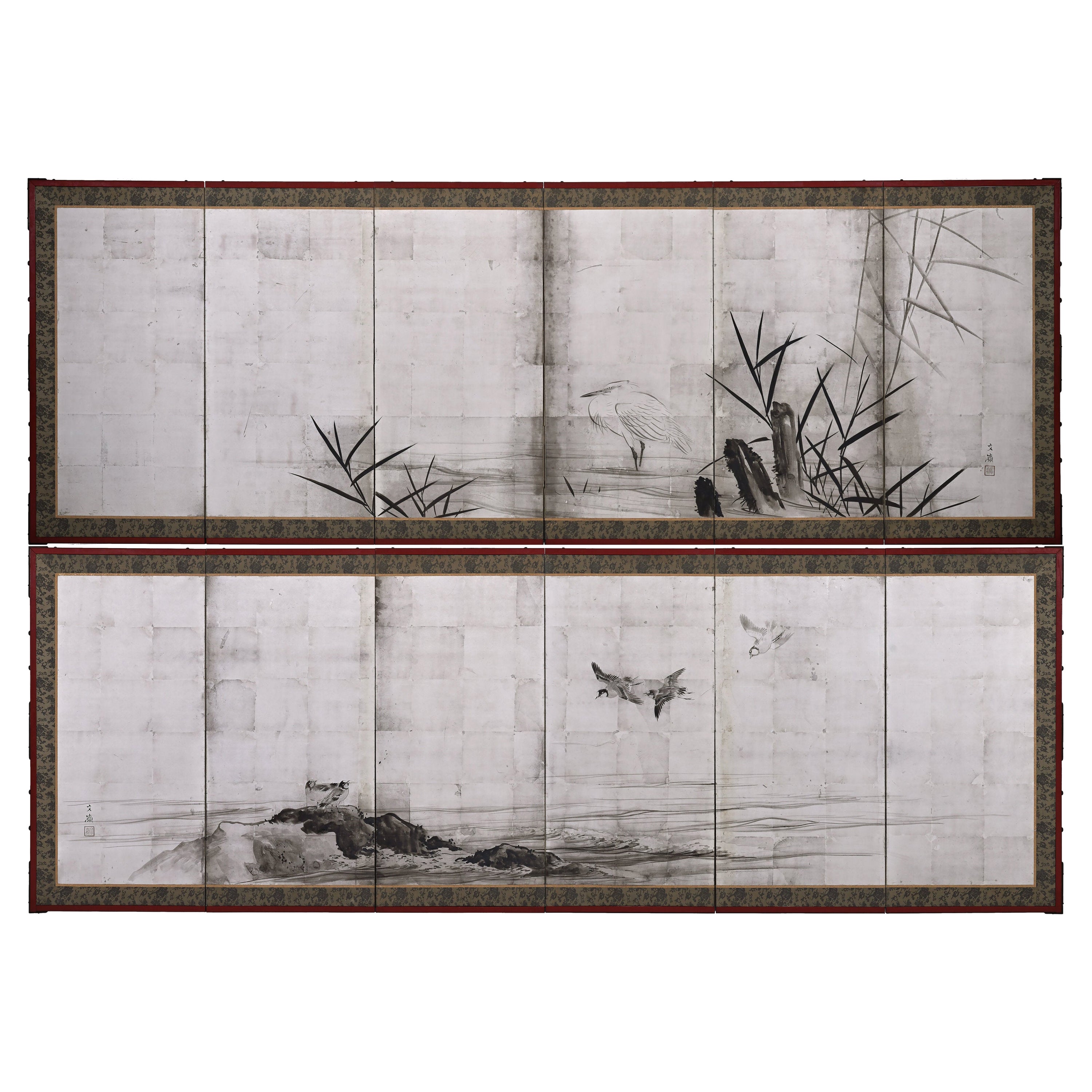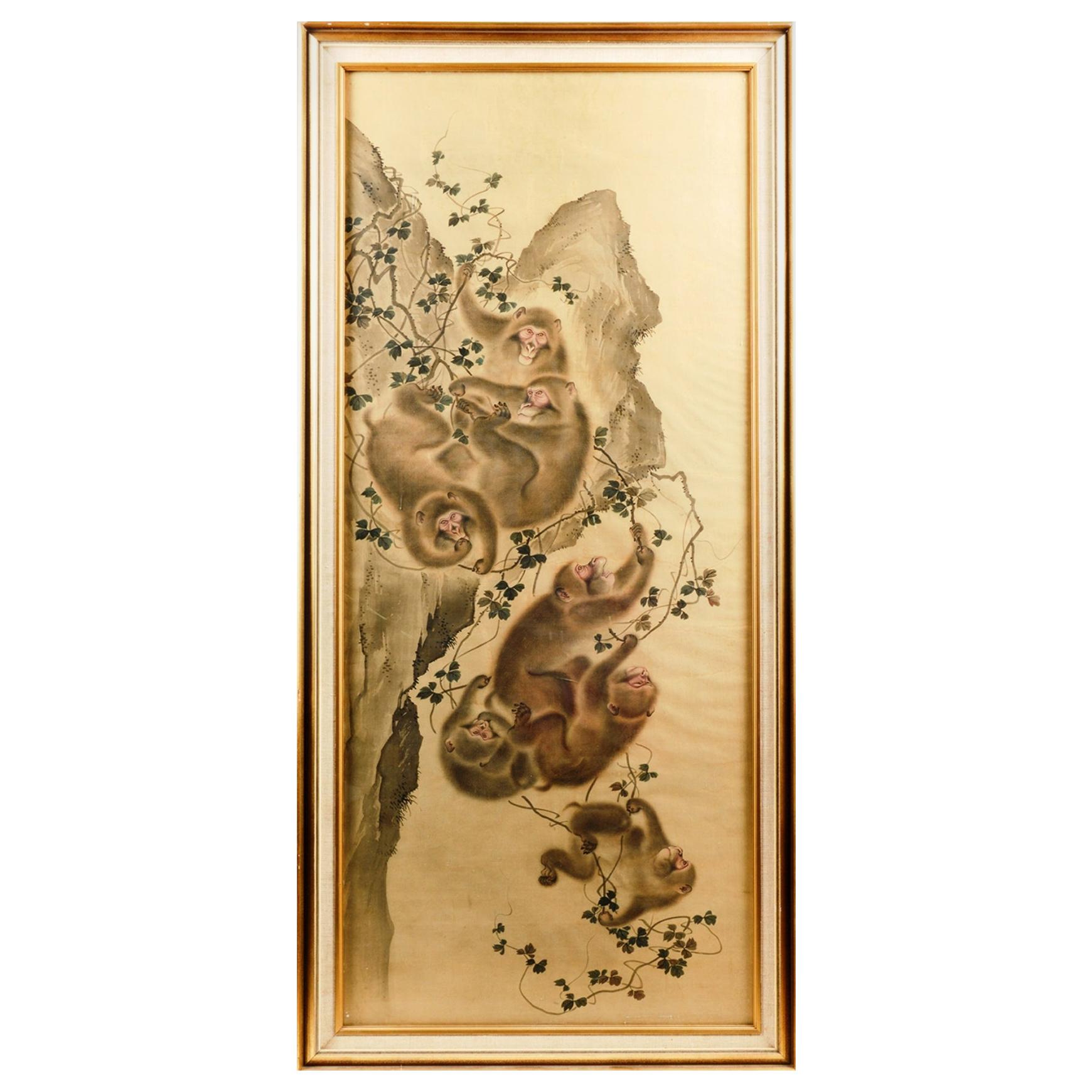Items Similar to Antique Student Writing Map Japanese Lacquer Ware Writing Meiji Period
Want more images or videos?
Request additional images or videos from the seller
1 of 5
Antique Student Writing Map Japanese Lacquer Ware Writing Meiji Period
About the Item
Antique Student Writing Map Japanese Lacquer Ware Writing Meiji Period Japan
Some damage
Additional information:
Material: Lacquer
Region of Origin: Japan
Period: 19th century
Original/Reproduction: Original
Condition: Overall Condition In used condition.
Dimension: 3.5 W x 28 H cm
- Dimensions:Height: 11.03 in (28 cm)Width: 13.78 in (35 cm)Depth: 0.04 in (1 mm)
- Materials and Techniques:
- Place of Origin:
- Period:
- Date of Manufacture:19th Century
- Condition:In used condition.
- Seller Location:Amsterdam, NL
- Reference Number:
About the Seller
5.0
Gold Seller
These expertly vetted sellers are highly rated and consistently exceed customer expectations.
Established in 2015
1stDibs seller since 2019
158 sales on 1stDibs
Typical response time: 9 hours
- ShippingRetrieving quote...Ships From: Amsterdam, Netherlands
- Return PolicyA return for this item may be initiated within 14 days of delivery.
More From This SellerView All
- Antique Student Pencil Box Japanese Lacquer Ware Writing Meiji Period JapanLocated in Amsterdam, Noord HollandA Japanese lacquer writing box 19th Century Of rectangular shape, overall painted in gold with a faboulas landscape scene on a brown lacquer ground, the interior in black. Additiona...Category
Antique 19th Century Japanese Decorative Boxes
MaterialsLacquer
- Antique Student Pencil Box Japanese Lacquer Ware Writing JapanLocated in Amsterdam, Noord HollandA Japanese lacquer writing box 19th Century Of rectangular shape, overall painted in gold with a faboulas landscape scene with a bird on a flowering branche, all on a black lacquer g...Category
Antique 19th Century Japanese Decorative Boxes
MaterialsLacquer
- Antique Student Pencil Box Japanese Lacquer Ware Writing JapanLocated in Amsterdam, Noord HollandA Japanese lacquer writing box 19th Century Of rectangular shape, overall painted in famille rose colors with flowers, all on a yellow ground, the interior in red. Additional inform...Category
Antique 19th Century Japanese Decorative Boxes
MaterialsLacquer
- Antique Japanese Painting Japan Meiji Period Dear in WinterLocated in Amsterdam, Noord HollandAntique Japanese Painting Japan Meiji Period Dear in Winter. A very nice blockprint. Additional information: Type: Paintings, Scrolls & Pri...Category
Antique 19th Century Japanese Paintings
- Antique Japanese Blockprint Painting Japan Edo or MeijiLocated in Amsterdam, Noord HollandAntique Japanese Blockprint Painting Japan Edo or Meiji. A very nice blockprint. Additional information: Type: Paintings, Scrolls & Prints Region of Origin: Japan Country of Manufa...Category
Antique 19th Century Japanese Paintings
- Japanese Painting Meiji Period Scroll by Kano Hogai Landscape a Luxury CraftLocated in Amsterdam, Noord HollandThe following is a craft item of the "Moonlit Night Landscape" hand-painted by the great master Kano Hogai . This is a truly beautiful and truly stunning piece of work, drawn using t...Category
Vintage 1930s Taisho Paintings
MaterialsSilk
You May Also Like
- Antique hanging scroll of Japanese cat/Late Edo-Meiji period/Cat paintingLocated in Sammu-shi, ChibaThis is a picture of a cat drawn by a person named "Toshizumi Nitta" from the end of the Edo period to the beginning of the Meiji period. She is a very simple and cute cat. He is a vassal of the Tokugawa Shogunate, born in Ota City, Gunma Prefecture (southern part of Gunma Prefecture). He was related to the Tokugawa family and lived in a large mansion in the Ota clan in Gunma prefecture. However, the Nitta family's territory was very small, and they were by no means a wealthy vassal. He seems to have lived quite poorly. So he painted cats and sold them to people. The Nitta family continued to draw pictures of this cat for four generations. "Nitta toshizumi" is equivalent to the fourth generation. During the Edo period, sericulture was thriving in the Kanto region. Cats were said to be the gods of silkworms, as they drive away mice, the natural enemies of silkworms. It was the Nitta family who drew such a cat on paper, pasted it in the silkworm chamber, and sold it as a mouse repellent. There were also other monks who painted pictures of cats, but the Nitta family in particular was related to the Tokugawa family, so people believed that paintings of cats had special powers. , a lot of paintings...Category
Antique Late 19th Century Japanese Edo Paintings
MaterialsPaper
- Meiji Period Japanese Four Panel Screen Bijin At LeisureLocated in Hudson, NYJapanese four panel screen: Bijin At Leisure. Ladies in a tea house with a small dog. Seal reads "Ensan dai" (drawn by Ensan). Meiji Period (1868 - 1912) pa...Category
Antique Late 19th Century Japanese Meiji Paintings and Screens
MaterialsSilk, Wood
- Japanese Silver Screen Pair, Meiji Period, Herons & Plovers, Shijo SchoolLocated in Kyoto, JPHeron & Plovers Ink and silver leaf on paper Maekawa Bunrei (1837-1917) A pair of low six-panel Japanese screens by Maekawa Bunrei, a later master of the Kyoto based Shijo school of painting. On the right screen a solitary white heron stands motionless in a stream. On the left screen plovers play along a shoreline. The elegant forms are executed employing fluid, minimalistic ink brushstrokes. The soft brushstrokes and the sharp light of the silver leaf lend the scenes a sense of translucence. The sophisticated composition superbly exploits the long, horizontal pictorial surface of the pair of folding screens...Category
Antique Early 1900s Japanese Meiji Paintings and Screens
MaterialsSilver Leaf
- Fine Japanese Meiji Period Water Color on Silk of MonkeysLocated in Brighton, SussexA wonderful fine quality Japanese Meiji period (1868-1912) water color on silk of seven monkeys climbing and playing on a rock face with trailing foliage...Category
Antique Late 19th Century Japanese Japonisme Paintings
MaterialsSilk
- Meiji Period Japanese Screen Pair, One Hundred Birds by Hasegawa GyokujunLocated in Kyoto, JPOne hundred birds Hasegawa Gyokujun (1863-1921) Meiji period, circa 1900. Ink, color and gofun on silk. Dimensions of each screen: H. 170 cm x W. 190 cm (67’’ x 75”) Despite the title, well over 100 birds are represented in this pair of two-fold Japanese screens (the title functions figuratively to convey the idea of a large number). The monumental work is rendered with a comprehensive and highly complex composition which is exquisitely executed and meticulously colored. More a celebration of naturalism than the traditional “One Hundred Birds” paintings which originated in China. This was a subject matter known for its auspicious meaning as much as its actual depiction of nature. These paintings generally had a phoenix (occasionally peacocks) placed in the center, and the other birds paying homage to it. In this quintessentially Japanese scene painted by Gyokujun, a couple of long-tailed birds modeled after paradise flycatchers are included; these are traditional auspicious motifs in Oriental bird and flower painting and denote themes such as celebration and enduring generations. In addition there is the playful inclusion of single exotic parrot. Even so, the vast majority of the birds and flowers are native to Japan. Reading the scene from right to left, from spring through to autumn, the overwhelming sense is one of movement and haste. It is almost as if the birds are in a race, with the fleetest leading the way forward. Although these native birds were commonly drawn amongst artists of the Shijo school, rarely were they painted with such drama and dynamism. It is not strictly a depiction of sketched birds whose manner was faithfully handed down through the traditions of the Shijo school. Rather we see Gyokujun seeking and achieving new expressions in the heart of the turbulent Meiji period. Hasegawa Gyokujun (1863-1921) was born in Kyoto. He was the eldest son of Hasegawa Gyokuho, a Shijo school painter who studied under Matsumura Keibun. Gyokujun studied painting under his father and became a prominent member of the Kyoto painti ng world from a young age. In 1891 he established the ‘Young Painters Social Club’ along with Takeuchi Seiho, Miyake Gogyo and Taniguchi Kokyo. Also in 1891 he was selected as a judge of the Great Private Paintings Exhibition along with Takeuchi Seiho, Yamamoto Shunkyo...Category
Antique Early 1900s Japanese Meiji Paintings and Screens
MaterialsSilk, Wood
- Japanese Meiji Riverside Scroll Painting, c. 1900Located in Chicago, ILAlthough western painting was initially embraced during Japan’s Meiji period (1868-1912), artists brought on a revival of traditional painting styles as they sought to create a modern Japanese style with roots in the past. This exquisite hanging scroll demonstrates the preference for soft layering of gray tones with judicious use of color. The landscape is rendered in soft ink washes that subtly distinguish between water, mountain, and sky. The scroll painting...Category
Early 20th Century Japanese Meiji Paintings and Screens
MaterialsPaper
